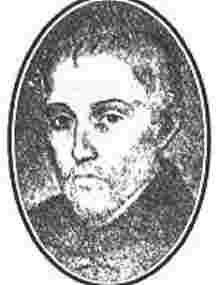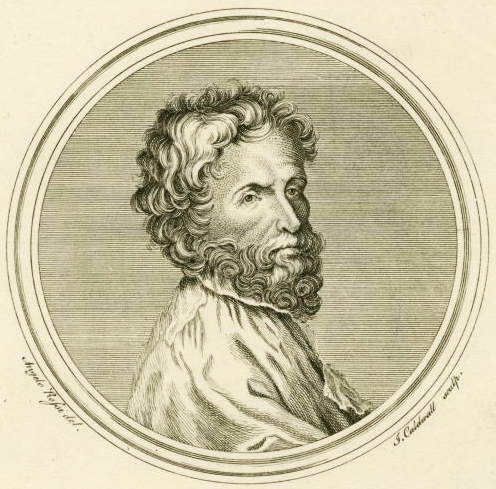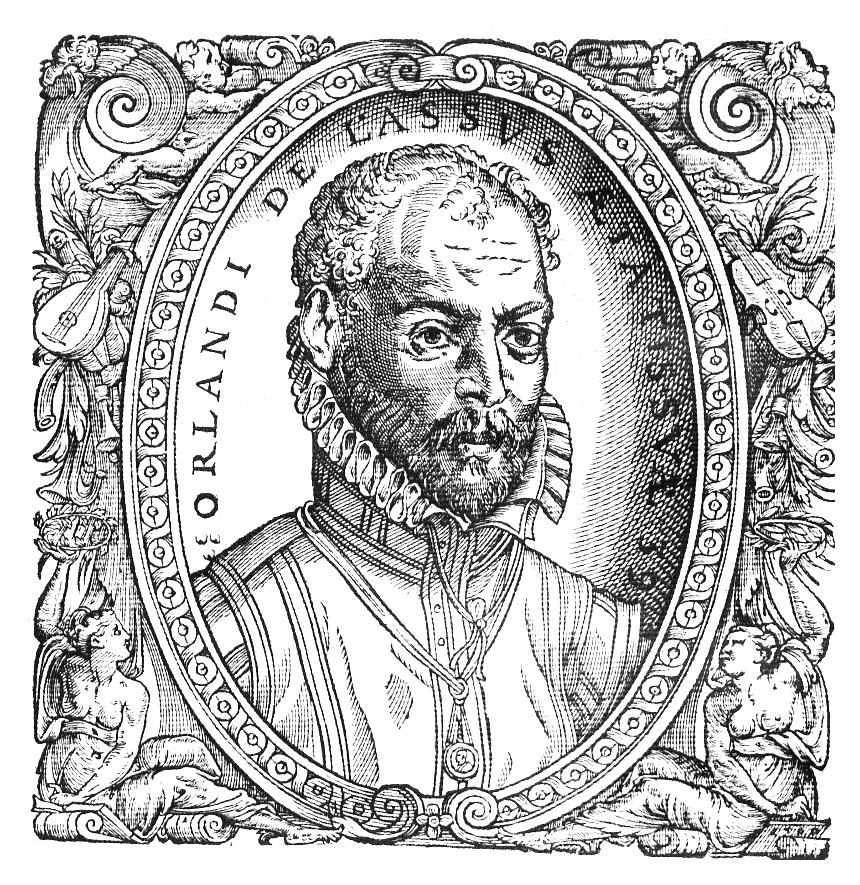|
Heavenly Spheres
''Heavenly Spheres'' (L'Harmonie des Sphères) is an a cappella choral album by the Studio de musique ancienne de Montréal under the direction of Christopher Jackson. Recorded in 1998, it features songs from the late 15th to early 16th century. It was awarded a Félix Award from the ADISQ and was nominated for the Juno Award for Classical Album of the Year – Vocal or Choral Performance in 2000. Juno Awards of 2000#Best Classical Album .28Vocal or Choral Performance.29 The album includes performances of compositions by Nicolas Gombert, Roland de Lassus, Giovanni Pierluigi da Palestrina, Josquin des Prez, and others. Track listing #''Musae Jovis'', the lament on the death of Josquin des Prez, for 6 voices by Nicolas Gombert #''Inviolata, integra et casta es'', motet for 5 voices by Josquin des Prez #Motet ''Tulerunt Dominum meum'' for 8 voices by Nicolas Gombert #''Nesciens Mater Virgo Virum'', for 8 voices by Jean Mouton #''Andreas Christi famulus'' for 8 voices, motet ... [...More Info...] [...Related Items...] OR: [Wikipedia] [Google] [Baidu] |
Studio De Musique Ancienne De Montréal
The Studio de musique ancienne de Montréal is a professional early music vocal ensemble based in Montreal, Quebec, Canada. History The group was co-founded in 1974 by the organ and harpsichord players Christopher Jackson, Réjean Poirier and Hélène Dugal, and became an important part of the early music revival in Montréal during the 1970s. Jackson became the ensemble's sole director in 1988. During the 1980s and 90s the group gave almost 90 concerts in France and Spain including performing and recording early music connected to Montréal and New France. In 2015, Andrew McAnerney was appointed Artistic Director following the death of Christopher Jackson. Concerts The Studio produces an annual season of ten concerts in Montréal, and appears regularly at festivals throughout Canada and internationally. Notable collaborations have included Jordi Savall, Emma Kirkby, Ton Koopman, Skip Sempé, Guillemette Laurens, Matthias Maute, Noel Edison, Suzie LeBlanc and Daniel Taylor. ... [...More Info...] [...Related Items...] OR: [Wikipedia] [Google] [Baidu] |
Nicolas Gombert
Nicolas Gombert (c. 1495 – c. 1560)Atlas, p. 396 was a Franco-Flemish composer of the Renaissance. He was one of the most famous and influential composers between Josquin des Prez and Palestrina, and best represents the fully developed, complex polyphonic style of this period in music history. Life Details of his early life are sketchy, but he was probably born around 1495 in southern Flanders, probably between Lille and Saint-Omer, possibly in the town of La Gorgue. German writer and music theorist Hermann Finck wrote that Gombert studied with Josquin; this would have been during the renowned composer's retirement in Condé-sur-l'Escaut, sometime between 1515 and 1521.Nugent/Jas, Grove online Gombert was employed by the emperor Charles V as a singer in his court chapel in 1526 and possibly as a composer as well. Most likely he was taken on while Charles was passing through Flanders, for the emperor traveled often, bringing his retinue with him, and picking up new members as h ... [...More Info...] [...Related Items...] OR: [Wikipedia] [Google] [Baidu] |
Tomás Luis De Victoria
Tomás Luis de Victoria (sometimes Italianised as ''da Vittoria''; ) was the most famous Spanish composer of the Renaissance. He stands with Giovanni Pierluigi da Palestrina and Orlande de Lassus as among the principal composers of the late Renaissance, and was "admired above all for the intensity of some of his motets and of his Offices for the Dead and for Holy Week". His surviving ''oeuvre'', unlike that of his colleagues, is almost exclusively sacred and polyphonic vocal music, set to Latin texts. As a Catholic priest, as well as an accomplished organist and singer, his career spanned both Spain and Italy. However, he preferred the life of a composer to that of a performer. Life and career Victoria was born in Sanchidrián in the province of Ávila, Castile, around 1548 and died in 1611. Victoria's family can be traced back for generations. Not only are the names of the members in his immediate family known, but even the occupation of his grandfather. Victoria was the sev ... [...More Info...] [...Related Items...] OR: [Wikipedia] [Google] [Baidu] |
Orlande De Lassus
Orlande de Lassus ( various other names; probably – 14 June 1594) was a composer of the late Renaissance. The chief representative of the mature polyphonic style in the Franco-Flemish school, Lassus stands with Giovanni Pierluigi da Palestrina and Tomás Luis de Victoria as the leading composers of the later Renaissance. Immensely prolific, his music varies considerably in style and genres, which gave him unprecedented popularity throughout Europe. Name Lassus's name appears in many spellings, often changed depending on the place in which his music was being performed or published. In addition to Orlande de Lassus, variations include Roland de Lassus, Orlando di Lasso, Orlandus Lassus, Orlande de Lattre and Roland de Lattre. Life and career Orlande de Lassus was born in Mons in the County of Hainaut, Habsburg Netherlands (modern-day Belgium). Information about his early years is scanty, although some uncorroborated stories have survived, the most famous of which is that ... [...More Info...] [...Related Items...] OR: [Wikipedia] [Google] [Baidu] |
Cristóbal De Morales
Cristóbal de Morales (c. 1500 – between 4 September and 7 October 1553) was a Spanish composer of the Renaissance. He is generally considered to be the most influential Spanish composer before Tomás Luis de Victoria. Life Cristóbal de Morales was born in Seville and, after an exceptional early education there, which included a rigorous training in the classics as well as musical study with some of the foremost composers, he held posts at Ávila and Plasencia. All that is known about his family is that he had a sister, and that his father died prior to his sister's marriage in 1530. Others who lived in Seville are considered to be potential relatives of Morales. These include Cristóbal de Morales, a singer employed by Duke of Medina Sidonia in 1504; Alonso de Morales, treasurer of the cathedral in 1503; Francisco de Morales (d. 1505), a canon; and Diego de Morales, who was the cathedral notary in 1525. Earlier Spanish popes of the Borja family held a long tradition of em ... [...More Info...] [...Related Items...] OR: [Wikipedia] [Google] [Baidu] |
Jean Mouton
Jean Mouton (c. 1459 – 30 October 1522) was a French composer of the Renaissance. He was famous both for his motets, which are among the most refined of the time, and for being the teacher of Adrian Willaert, one of the founders of the Venetian School. Life He was born Jean de Hollingue either in 1459 or earlier, but records of his early life, as is so often the case with Renaissance composers, are scant. Most likely he was from the village of Haut-Wignes (now Wirwignes), near Boulogne-sur-Mer, in Samer. He probably began his first job, singer and teacher at the collegiate church in Saint Omer, then moved to Nesle (southeast of Amiens) in 1477, and in 1483 was made ''maître de chapelle'' there. Sometime around this time he became a priest, and in 1500 he was in charge of choirboys at the cathedral in Amiens. In 1501 he was in Grenoble, teaching choirboys, but he left the next year, most likely entering the service of Queen Anne of Brittany, and in 1509 he was granted a ... [...More Info...] [...Related Items...] OR: [Wikipedia] [Google] [Baidu] |
Josquin Des Prez
Josquin Lebloitte dit des Prez ( – 27 August 1521) was a composer of High Renaissance music, who is variously described as French or Franco-Flemish. Considered one of the greatest composers of the Renaissance, he was a central figure of the Franco-Flemish School and had a profound influence on the music of 16th-century Europe. Building on the work of his predecessors Guillaume Du Fay and Johannes Ockeghem, he developed a complex style of expressive—and often imitative—movement between independent voices (polyphony) which informs much of his work. He further emphasized the relationship between text and music, and departed from the early Renaissance tendency towards lengthy melismatic lines on a single syllable, preferring to use shorter, repeated motifs between voices. Josquin was a singer, and his compositions are mainly vocal. They include masses, motets and secular chansons. Josquin's biography has been continually revised by modern scholarship, and remains highly u ... [...More Info...] [...Related Items...] OR: [Wikipedia] [Google] [Baidu] |
Giovanni Pierluigi Da Palestrina
Giovanni Pierluigi da Palestrina ( – 2 February 1594) was an Italian composer of late Renaissance music. The central representative of the Roman School, with Orlande de Lassus and Tomás Luis de Victoria, Palestrina is considered the leading composer of late 16th-century Europe. Primarily known for his masses and motets, which number over 105 and 250 respectively, Palestrina had a long-lasting influence on the development of church and secular music in Europe, especially on the development of counterpoint. According to '' Grove Music Online'', Palestrina's "success in reconciling the functional and aesthetic aims of Catholic church music in the post-Tridentine period earned him an enduring reputation as the ideal Catholic composer, as well as giving his style (or, more precisely, later generations’ selective view of it) an iconic stature as a model of perfect achievement." Biography Palestrina was born in the town of Palestrina, near Rome, then part of the Papal States to N ... [...More Info...] [...Related Items...] OR: [Wikipedia] [Google] [Baidu] |
Roland De Lassus
Orlande de Lassus ( various other names; probably – 14 June 1594) was a composer of the late Renaissance. The chief representative of the mature polyphonic style in the Franco-Flemish school, Lassus stands with Giovanni Pierluigi da Palestrina and Tomás Luis de Victoria as the leading composers of the later Renaissance. Immensely prolific, his music varies considerably in style and genres, which gave him unprecedented popularity throughout Europe. Name Lassus's name appears in many spellings, often changed depending on the place in which his music was being performed or published. In addition to Orlande de Lassus, variations include Roland de Lassus, Orlando di Lasso, Orlandus Lassus, Orlande de Lattre and Roland de Lattre. Life and career Orlande de Lassus was born in Mons in the County of Hainaut, Habsburg Netherlands (modern-day Belgium). Information about his early years is scanty, although some uncorroborated stories have survived, the most famous of which is tha ... [...More Info...] [...Related Items...] OR: [Wikipedia] [Google] [Baidu] |
Juno Awards Of 2000
The Juno Awards of 2000 were held in Toronto, Ontario, Canada during the weekend of 11–12 March 2000. The primary ceremonies were hosted by The Moffatts at the SkyDome (now Rogers Centre) on 12 March 2000 and broadcast on CBC Television. This marked the first year that the award ceremonies were divided over two days, with non-televised award categories presented on 11 March. The following award categories were nationally televised: * Best Female Artist * Best Male Artist * Best Country Male Vocalist * Best Group * Best New Group * Best Songwriter * Best Album * Best Selling Album (Foreign or Domestic) * Best Vocal Jazz Album *Canadian Music Hall of Fame A new design for the Juno Award statuettes was created by artist Shirley Elford and introduced at this year's awards. Nominations were announced 2 February 2000 in Toronto at the Glenn Gould Studio. Alanis Morissette received five nominations including one as director for Best Video. Nominees and winners Best Female Artis ... [...More Info...] [...Related Items...] OR: [Wikipedia] [Google] [Baidu] |
A Cappella
''A cappella'' (, also , ; ) music is a performance by a singer or a singing group without instrumental accompaniment, or a piece intended to be performed in this way. The term ''a cappella'' was originally intended to differentiate between Renaissance polyphony and Baroque concertato musical styles. In the 19th century, a renewed interest in Renaissance polyphony, coupled with an ignorance of the fact that vocal parts were often doubled by instrumentalists, led to the term coming to mean unaccompanied vocal music. The term is also used, rarely, as a synonym for ''alla breve''. Early history A cappella could be as old as humanity itself. Research suggests that singing and vocables may have been what early humans used to communicate before the invention of language. The earliest piece of sheet music is thought to have originated from times as early as 2000 B.C. while the earliest that has survived in its entirety is from the first century A.D.: a piece from Greece called the ... [...More Info...] [...Related Items...] OR: [Wikipedia] [Google] [Baidu] |
Juno Award For Classical Album Of The Year – Vocal Or Choral Performance
The Juno Award for "Classical Album of the Year" has been awarded since 1994, as recognition each year for the best vocal classical music album in Canada. Winners Best Classical Album (Vocal or Choral Performance) (1994 - 2002) *1994 - Claudette Leblanc (soprano), Valerie Tryon (piano), ''Debussy Songs'' *1995 - Vocal Soloists/Choeur et Orchestre symphonique de Montreal, Charles Dutoit - Conductor, ''Berlioz: Les Troyens'' *1996 - Ben Heppner (tenor), The Toronto Symphony Orchestra, Andrew Davis - Conductor, ''Ben Heppner Sings Richard Strauss'' *1997 - Choeur et orchestre symphonique de Montréal, Charles Dutoit - Conductor, ''Berlioz: La Damnation de Faust'' *1998 - Michael Schade (tenor), Russell Braun (baritone), Canadian Opera Company Orchestra, Richard Bradshaw, ''Soirée française'' *1999 - Gerald Finley (baritone), Stephen Ralls (piano), ''Songs of Travel'' *2000 - Ben Heppner, ''German Romantic Opera'' *2001 - Karina Gauvin; Russell Braun; Les Violons du Roy, '' G. F. ... [...More Info...] [...Related Items...] OR: [Wikipedia] [Google] [Baidu] |






